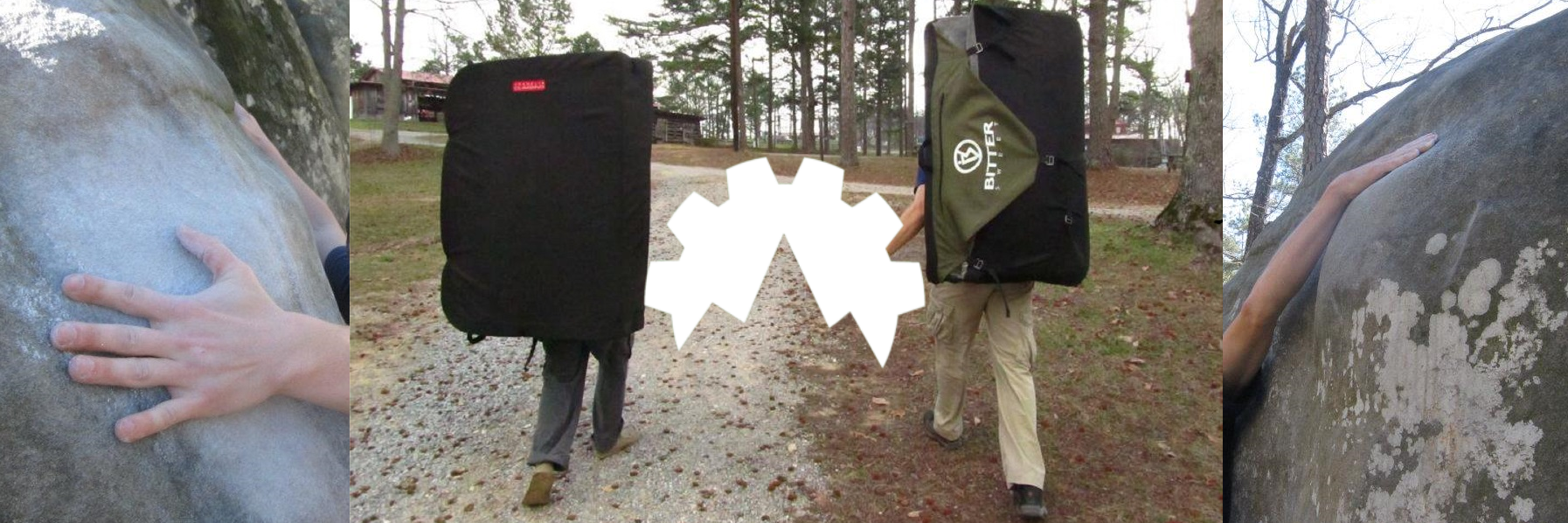You know what Unstucks My Nuts? Hangboard Training
Previously, in PART ONE, we took a quick look at the 40 (!) year history of hangboard and finger board training; how it started, who started it, the progression and evolution of the modality, and how exactly we ended up where we are now. For Part Two, it’s all about the value of a good hangboard program and, particularly in these trying times of self-quarantine and isolation, how to make the most of your time. A good hangboard program should do at least one of two things; either get you prepared for a trip, competition, or project, and/or serve as a supplement when you can’t climb whether due to a work schedule, kids, injury, or a pandemic.
 |
| Get busy training, or wait until lock down lifts to get busy crying. |
What got me on the path to hangboard training was the fact that I could not go climbing all the time. I started working at age 14, coupled with very active leadership in Boy Scouts, and the closest gym at the time 40 minutes away with no one to drive me I had to take what I could. After a pitiful display in my first ever competition I bought a hangboard in 2004. I researched what I could, but the internet was still dial-up, the mags stuck to showing exotic locales, and REI hadn’t come to town yet. I chose the Metolius Simulator for it’s density of holds, logical progression of hold depths, and how relatively trim it was compared to the few others I could find. Later I got the Rock Rings for the same reason. I took my boards away to college and mounted them on a collapsible A-frame in my dorm before we were able to re-open the climbing wall. I took the rings to study abroad in Spain so I could continue to train for the weekends. Since graduation, I’ve had a Grade 2 tear of my right LCL, twice, resulting in the necessity for a big leg brace. No climbing, but plenty of hangboarding. Broke my ankle so badly that it lead to two surgeries and over a year to recover, but the hangboard has kept me from losing it all returning and to square one. A hangboard, with counterweight or a support system, can also be used effectively to help come back from finger injuries, and I’ve had quite a few of those as well, one almost career ending. It may be frustrating that we can not go out and climb right now, but that doesn’t mean all is lost. Be glad if you can still train at all! Now, with all this time on our hands, we can focus on our weaknesses (mine is crimps), develop our overhead endurance, our maximum pulling power, or just fight atrophy. With all this freedom, I’m running two programs at once, 4 days a week since I can’t get out to climb. One is hard and strength based, and one is easier and endurance based. I don’t plan to lose what I have, and neither should you.
We are living in a golden age of training for climbing. There are so many boards available now, much more than when I started, and even more resources for program and protocol. I got my training ideas from an old, now defunct, HTML website and the little pamphlet that came with my board. Entire books have now been written on how to use these boards properly for the most gain. In this ARTICLE, they rank the top hangboard with a nifty pro/con list for each one, as well as the dimensions for each so you know if it will fit over your door frame. Can’t hang a board in your apartment? Find a bar to hang from and bring one of THESE travel boards with you. Reading not your thing and really want the lowdown with visual aides? Rock & Ice did a very comprehensive video on the best hangboards as well right HERE with Francis Sanzaro and Delaney Miller. Hangboarding is not going away, and as more science gets thrown at the subject, we are only going to see better programs and tools for future climbers. The very idea of hangboarding has developed its own philosophy and deeper understanding, as written by Tension HERE. It has kept me sane and focused when I could not walk, and some programs even become little projects on their own. If you don’t believe me, take the word(s) of eight pro climbing athletes and how they have used hangboarding to take them to the top in this ARTICLE. To think that it was once called cheating.
There are plenty of programs available, many of them for free on the internet. Take advantage of what I didn’t have when I started. No more just throwing yourself at the board and hoping to get stronger. Set a goal, plan it out, and work the plan. To get you started, here are few of my favorites:
7 x 7 Program (Beginner Program)
 |
| Hmm, 7 holds. Coincidence? |
3-6-9 Protocol (Maximum Strength, Bouldering)
 |
| Get ‘dem edges! |
7/3 Repeaters (Strength-Endurance, Sport/Trad)
-Tylor Streett, wishes he could have all the hangboards, but will settle for a full campus board of Iron Palms.
